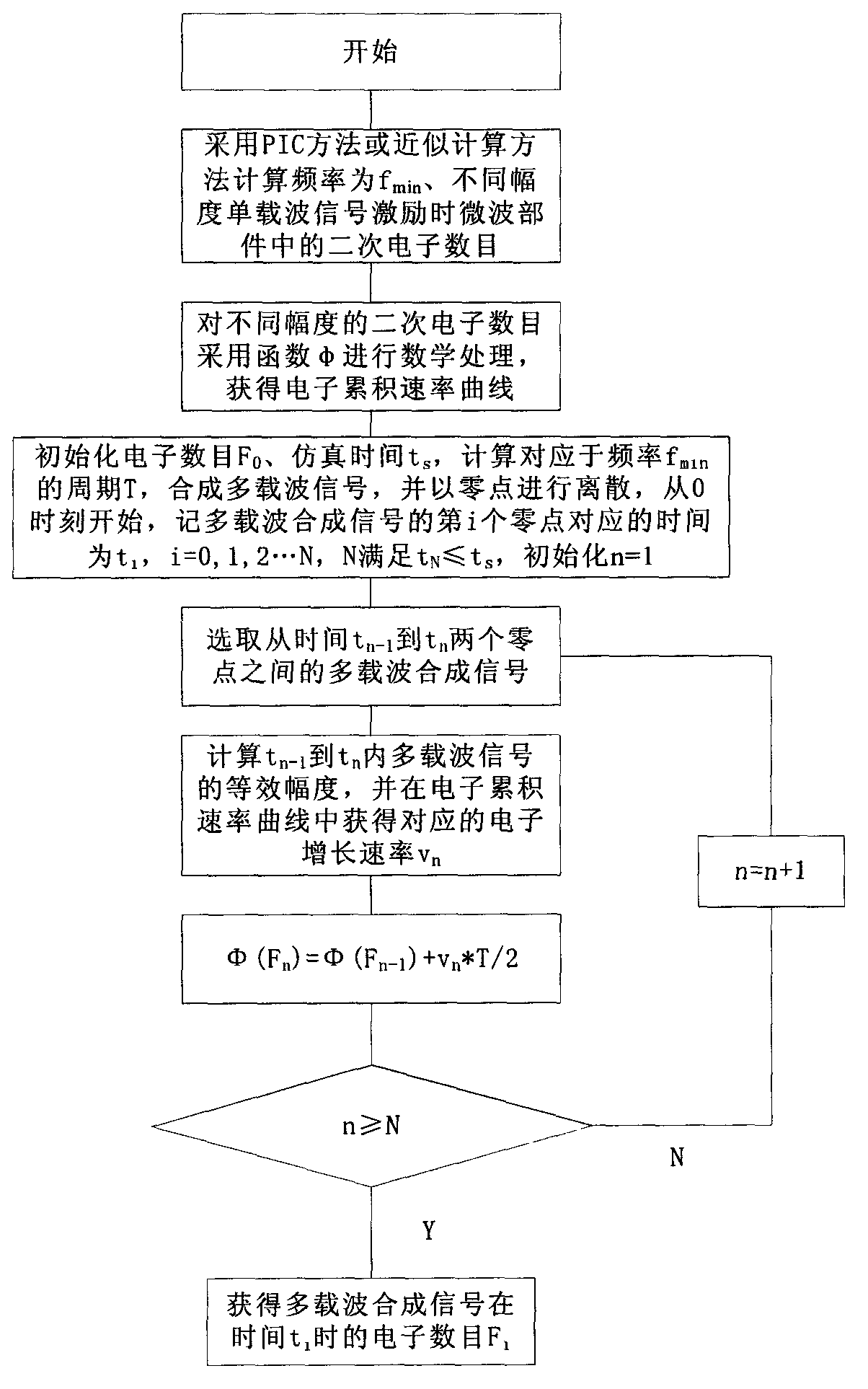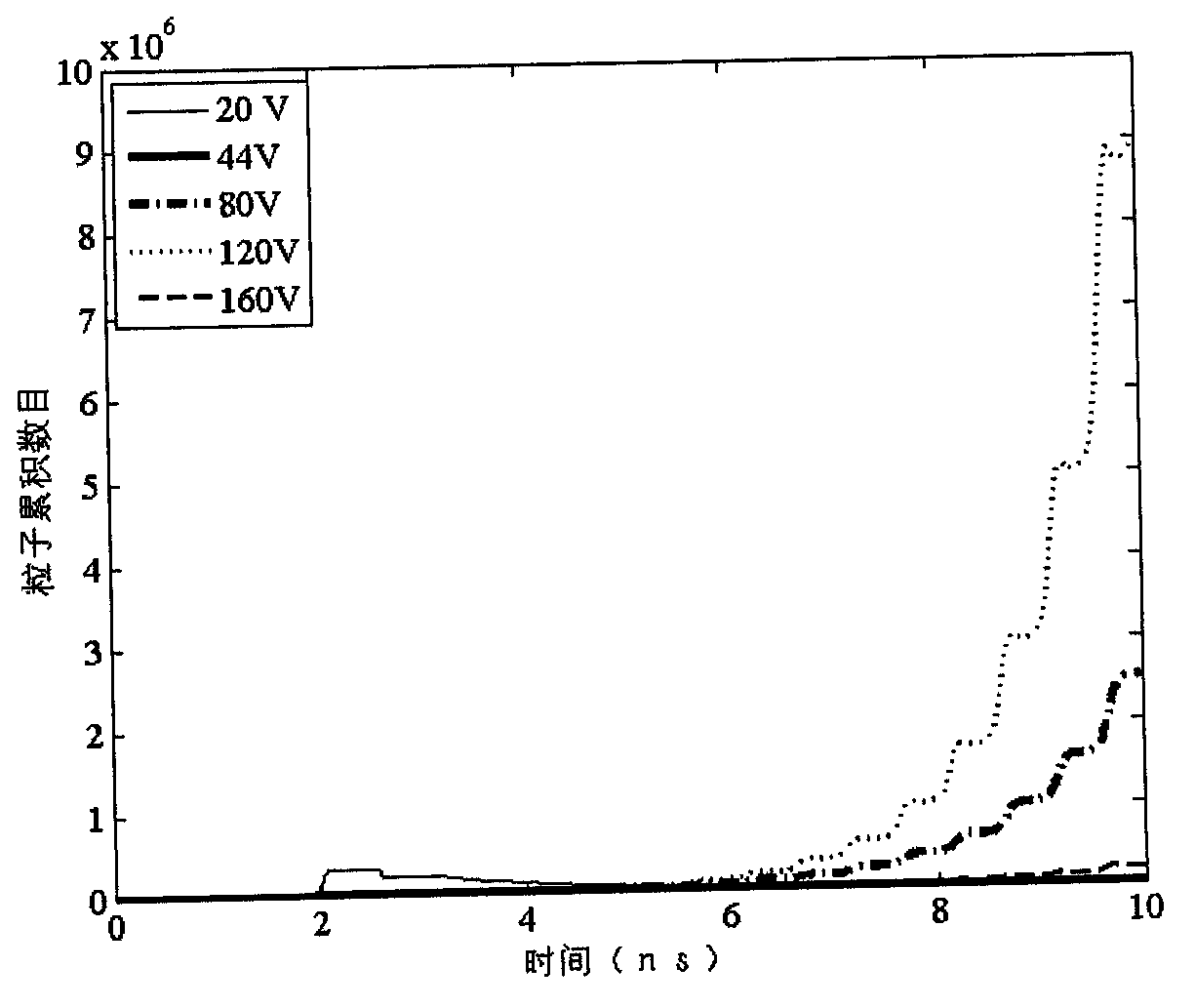Method for determining multi-carrier micro-discharging secondary electron number
A secondary electron and multi-carrier technology, applied in the microwave field, can solve problems such as component overdesign
- Summary
- Abstract
- Description
- Claims
- Application Information
AI Technical Summary
Problems solved by technology
Method used
Image
Examples
Embodiment
[0035] (1) For such as figure 2The parallel plate structure with a thickness of 1mm shown is implemented with 5 carriers, the frequencies of the 5 carriers are f1=1GHz, f2=1.04GHz, f3=1.08GHz, f4=1.12GHz and f5=1.16GHz, and the carrier amplitude is a 1 =a 2 =a 3 =a 4 =a 5 =18V, the initial phases of the 5 carriers are where the minimum frequency f min =1GHz, the particle simulation (PIC Particle-in-cell) is carried out with single-carrier signals of different amplitudes as excitation signals, and the accumulated number of electrons under the excitation of single-carrier signals of different amplitudes is obtained. Simulation results such as image 3 shown.
[0036] (2) Mathematically process the number of electrons obtained in the first step to obtain the change trend of the number of electrons over time. The mathematical function here is specifically φ(F n ) = log10(F n ). like Figure 4 As shown, the electron accumulation rate and signal amplitude v can...
PUM
 Login to View More
Login to View More Abstract
Description
Claims
Application Information
 Login to View More
Login to View More - Generate Ideas
- Intellectual Property
- Life Sciences
- Materials
- Tech Scout
- Unparalleled Data Quality
- Higher Quality Content
- 60% Fewer Hallucinations
Browse by: Latest US Patents, China's latest patents, Technical Efficacy Thesaurus, Application Domain, Technology Topic, Popular Technical Reports.
© 2025 PatSnap. All rights reserved.Legal|Privacy policy|Modern Slavery Act Transparency Statement|Sitemap|About US| Contact US: help@patsnap.com



